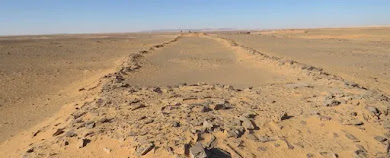The Australian dingoes descend from domesticated dogs coming from East Asia, probably with the Austronesian expansion into Island Southeast Asia around 6000 years ago. They were introduced from a small population of dogs and have since roamed wild in most of Australia.
That is the belief of some researchers. However, others question whether dingoes’ ancestors were ever domesticated. The dingo is a genetic intermediate between domestic dogs and wild wolves. This is probably because dingoes spent thousands of years isolated from other dog species. Modern domestic dogs didn’t arrive in Australia until 1788, when they were introduced by Europeans.Bill Ballard at La Trobe University in Melbourne, Australia, believes that the dingo may have been introduced to Australia as a tamed wild animal, one accustomed to living alongside people but not domesticated through selective breeding.
In 2017, the dingo won the “World’s Most Interesting Genome” competition held by US biotech company Pacific Biosciences.


